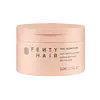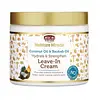What's inside
What's inside
 Key Ingredients
Key Ingredients

 Benefits
Benefits

 Concerns
Concerns

 Ingredients Side-by-side
Ingredients Side-by-side

Water
Skin ConditioningGlycerin
HumectantPolyquaternium-37
Isopropyl Palmitate
EmollientHydrolyzed Vegetable Protein
Skin ConditioningPereskia Aculeata Callus Extract
Camellia Sinensis Leaf Extract
AntimicrobialCetearyl Alcohol
EmollientGlyceryl Ricinoleate
EmollientAlanine
MaskingArginine
MaskingAspartic Acid
MaskingGlycine
BufferingHistidine
HumectantIsoleucine
Skin ConditioningPhenylalanine
MaskingProline
Skin ConditioningSerine
MaskingThreonine
Valine
MaskingCocos Nucifera Fruit Extract
EmollientGluconolactone
Skin ConditioningIrvingia Gabonensis Kernel Butter
Skin ConditioningMomordica Cochinchinensis Seed Extract
Skin ConditioningOryza Sativa Extract
AbsorbentHydrolyzed Rice Protein
Skin ConditioningPanthenol
Skin ConditioningPCA
HumectantPhytic Acid
Ricinus Communis Seed Oil
MaskingCocos Nucifera Oil
MaskingSalvia Hispanica Seed Extract
EmollientSodium PCA
HumectantVaccinium Myrtillus Seed Oil
Skin ConditioningTrehalose
HumectantHydroxypropyl Guar
Emulsion StabilisingTriheptanoin
Skin ConditioningXylitol
HumectantEthyl Linoleate
EmollientOctyldodecanol
EmollientCaprylyl/Capryl Glucoside
CleansingEthyl Oleate
EmollientPolyglyceryl-10 Laurate
Skin ConditioningHydrogenated Coco-Glycerides
EmollientMagnesium Aluminum Silicate
AbsorbentC13-16 Isoalkane
SolventPolyquaternium-68
Sodium Phosphate
BufferingLactobacillus Ferment
Skin ConditioningSodium Lactate
BufferingSodium Lignosulfonate
Galactoarabinan
Caprylic Acid
CleansingPropanediol
SolventSorbitan Oleate
EmulsifyingPentaerythrityl Tetra-Di-T-Butyl Hydroxyhydrocinnamate
AntioxidantTocopherol
AntioxidantCalcium Gluconate
HumectantCitric Acid
BufferingSodium Chloride
MaskingLactic Acid
BufferingSodium Carbonate
BufferingGlycolic Acid
BufferingSodium Hydroxide
BufferingCaprylyl Glycol
EmollientEthylhexylglycerin
Skin ConditioningSodium Benzoate
MaskingBehentrimonium Chloride
PreservativeCetrimonium Chloride
AntimicrobialPhenoxyethanol
PreservativeBenzyl Alcohol
PerfumingParfum
MaskingAlpha-Isomethyl Ionone
PerfumingBenzyl Salicylate
PerfumingCitral
PerfumingCoumarin
PerfumingEugenol
PerfumingGeraniol
PerfumingHexyl Cinnamal
PerfumingHydroxycitronellal
PerfumingLimonene
PerfumingLinalool
PerfumingWater, Glycerin, Polyquaternium-37, Isopropyl Palmitate, Hydrolyzed Vegetable Protein, Pereskia Aculeata Callus Extract, Camellia Sinensis Leaf Extract, Cetearyl Alcohol, Glyceryl Ricinoleate, Alanine, Arginine, Aspartic Acid, Glycine, Histidine, Isoleucine, Phenylalanine, Proline, Serine, Threonine, Valine, Cocos Nucifera Fruit Extract, Gluconolactone, Irvingia Gabonensis Kernel Butter, Momordica Cochinchinensis Seed Extract, Oryza Sativa Extract, Hydrolyzed Rice Protein, Panthenol, PCA, Phytic Acid, Ricinus Communis Seed Oil, Cocos Nucifera Oil, Salvia Hispanica Seed Extract, Sodium PCA, Vaccinium Myrtillus Seed Oil, Trehalose, Hydroxypropyl Guar, Triheptanoin, Xylitol, Ethyl Linoleate, Octyldodecanol, Caprylyl/Capryl Glucoside, Ethyl Oleate, Polyglyceryl-10 Laurate, Hydrogenated Coco-Glycerides, Magnesium Aluminum Silicate, C13-16 Isoalkane, Polyquaternium-68, Sodium Phosphate, Lactobacillus Ferment, Sodium Lactate, Sodium Lignosulfonate, Galactoarabinan, Caprylic Acid, Propanediol, Sorbitan Oleate, Pentaerythrityl Tetra-Di-T-Butyl Hydroxyhydrocinnamate, Tocopherol, Calcium Gluconate, Citric Acid, Sodium Chloride, Lactic Acid, Sodium Carbonate, Glycolic Acid, Sodium Hydroxide, Caprylyl Glycol, Ethylhexylglycerin, Sodium Benzoate, Behentrimonium Chloride, Cetrimonium Chloride, Phenoxyethanol, Benzyl Alcohol, Parfum, Alpha-Isomethyl Ionone, Benzyl Salicylate, Citral, Coumarin, Eugenol, Geraniol, Hexyl Cinnamal, Hydroxycitronellal, Limonene, Linalool
Water
Skin ConditioningButyrospermum Parkii Butter
Skin ConditioningGlycerin
HumectantVitis Vinifera Seed Oil
EmollientCocos Nucifera Oil
MaskingCetrimonium Chloride
AntimicrobialDicetyldimonium Chloride
EmulsifyingAdansonia Digitata Seed Oil
EmollientOlea Europaea Fruit Oil
MaskingArgania Spinosa Kernel Oil
EmollientTocopherol
AntioxidantPanthenol
Skin ConditioningPersea Gratissima Oil
Skin ConditioningPolyquaternium-37
Dicaprylyl Carbonate
EmollientLauryl Glucoside
CleansingCyclopentasiloxane
EmollientCetearyl Alcohol
EmollientCeteareth-20
CleansingPhenyl Trimethicone
Skin ConditioningPolysorbate 20
EmulsifyingHydroxyethylcellulose
Emulsion StabilisingPhenoxyethanol
PreservativeEthylhexylglycerin
Skin ConditioningPEG-40 Hydrogenated Castor Oil
EmulsifyingParfum
MaskingCoumarin
PerfumingHydroxycitronellol
PerfumingLinalool
PerfumingWater, Butyrospermum Parkii Butter, Glycerin, Vitis Vinifera Seed Oil, Cocos Nucifera Oil, Cetrimonium Chloride, Dicetyldimonium Chloride, Adansonia Digitata Seed Oil, Olea Europaea Fruit Oil, Argania Spinosa Kernel Oil, Tocopherol, Panthenol, Persea Gratissima Oil, Polyquaternium-37, Dicaprylyl Carbonate, Lauryl Glucoside, Cyclopentasiloxane, Cetearyl Alcohol, Ceteareth-20, Phenyl Trimethicone, Polysorbate 20, Hydroxyethylcellulose, Phenoxyethanol, Ethylhexylglycerin, PEG-40 Hydrogenated Castor Oil, Parfum, Coumarin, Hydroxycitronellol, Linalool
Ingredients Explained
These ingredients are found in both products.
Ingredients higher up in an ingredient list are typically present in a larger amount.
Cetearyl alcohol is a mixture of two fatty alcohols: cetyl alcohol and stearyl alcohol. It is mainly used as an emulsifier. Emulsifiers help prevent the separation of oils and products. Due to its composition, it can also be used to thicken a product or help create foam.
Cetearyl alcohol is an emollient. Emollients help soothe and hydrate the skin by trapping moisture.
Studies show Cetearyl alcohol is non-toxic and non-irritating. The FDA allows products labeled "alcohol-free" to have fatty alcohols.
This ingredient is usually derived from plant oils such as palm, vegetable, or coconut oils. There is debate on whether this ingredient will cause acne.
Due to the fatty acid base, this ingredient may not be Malassezia folliculitis safe.
Learn more about Cetearyl AlcoholThis ingredient is a preservative, antimicrobial, and emulsifier. It is often used in cosmetics for its ability to cleanse, condition, and reduce static.
Cetrimonium chloride is a quaternary ammonium salt, meaning it has a water-soluble structure.
Cocos Nucifera Oil is obtained from the kernels of the coconut fruit. In other words, this is coconut oil.
Coconut Oil is rich in fatty acids with lauric acid making up the majority of these. It also contains linoleic acid. Due to this high fatty acid content, coconut oil helps trap moisture and soften skin.
Despite being antibacterial, coconut oil may not be great for acne-prone skin. It is comedogenic and may clog pores. This ingredient may not be safe for malassezia or fungal acne.
Note: Coconut Oil should not replace your sunscreen for UV protection. Studies show it only blocks about 20% of UV.
This oil is non-volatile and has a light scent.
The term 'fragrance' is not regulated in many countries. In many cases, it is up to the brand to define this term. For instance, many brands choose to label themselves as "fragrance-free" because they are not using synthetic fragrances. However, their products may still contain ingredients such as essential oils that are considered a fragrance.
Learn more about Cocos Nucifera OilCoumarins are a group of substances found naturally in plants. There are over 1300 types of coumarins identified. It has a natural vanilla scent.
Coumarin is an identified EU known allergy, meaning it may cause an allergic reaction when applied to the skin.
In many countries, coumarin is banned as a food additive. However, it can be found in soaps, tobacco products, and some alcohol drinks.
Plants use coumarins as a chemical defense. Some plants that have coumarins include lavender, tonka beans, and yellow clovers.
Learn more about CoumarinEthylhexylglycerin (we can't pronounce this either) is commonly used as a preservative and skin softener. It is derived from glyceryl.
You might see Ethylhexylglycerin often paired with other preservatives such as phenoxyethanol. Ethylhexylglycerin has been found to increase the effectiveness of these other preservatives.
Glycerin is already naturally found in your skin. It helps moisturize and protect your skin.
A study from 2016 found glycerin to be more effective as a humectant than AHAs and hyaluronic acid.
As a humectant, it helps the skin stay hydrated by pulling moisture to your skin. The low molecular weight of glycerin allows it to pull moisture into the deeper layers of your skin.
Hydrated skin improves your skin barrier; Your skin barrier helps protect against irritants and bacteria.
Glycerin has also been found to have antimicrobial and antiviral properties. Due to these properties, glycerin is often used in wound and burn treatments.
In cosmetics, glycerin is usually derived from plants such as soybean or palm. However, it can also be sourced from animals, such as tallow or animal fat.
This ingredient is organic, colorless, odorless, and non-toxic.
Glycerin is the name for this ingredient in American English. British English uses Glycerol/Glycerine.
Learn more about GlycerinLinalool is a fragrance and helps add scent to products. It's derived from common plants such as cinnamon, mint, citrus, and lavender.
Like Limonene, this ingredient oxidizes when exposed to air. Oxidized linalool can cause allergies and skin sensitivity.
This ingredient has a scent that is floral, spicy tropical, and citrus-like.
Learn more about LinaloolPanthenol is a common ingredient that helps hydrate and soothe the skin. It is found naturally in our skin and hair.
There are two forms of panthenol: D and L.
D-panthenol is also known as dexpanthenol. Most cosmetics use dexpanthenol or a mixture of D and L-panthenol.
Panthenol is famous due to its ability to go deeper into the skin's layers. Using this ingredient has numerous pros (and no cons):
Like hyaluronic acid, panthenol is a humectant. Humectants are able to bind and hold large amounts of water to keep skin hydrated.
This ingredient works well for wound healing. It works by increasing tissue in the wound and helps close open wounds.
Once oxidized, panthenol converts to pantothenic acid. Panthothenic acid is found in all living cells.
This ingredient is also referred to as pro-vitamin B5.
Learn more about PanthenolParfum is a catch-all term for an ingredient or more that is used to give a scent to products.
Also called "fragrance", this ingredient can be a blend of hundreds of chemicals or plant oils. This means every product with "fragrance" or "parfum" in the ingredients list is a different mixture.
For instance, Habanolide is a proprietary trade name for a specific aroma chemical. When used as a fragrance ingredient in cosmetics, most aroma chemicals fall under the broad labeling category of “FRAGRANCE” or “PARFUM” according to EU and US regulations.
The term 'parfum' or 'fragrance' is not regulated in many countries. In many cases, it is up to the brand to define this term.
For instance, many brands choose to label themselves as "fragrance-free" because they are not using synthetic fragrances. However, their products may still contain ingredients such as essential oils that are considered a fragrance by INCI standards.
One example is Calendula flower extract. Calendula is an essential oil that still imparts a scent or 'fragrance'.
Depending on the blend, the ingredients in the mixture can cause allergies and sensitivities on the skin. Some ingredients that are known EU allergens include linalool and citronellol.
Parfum can also be used to mask or cover an unpleasant scent.
The bottom line is: not all fragrances/parfum/ingredients are created equally. If you are worried about fragrances, we recommend taking a closer look at an ingredient. And of course, we always recommend speaking with a professional.
Learn more about ParfumPhenoxyethanol is a preservative that has germicide, antimicrobial, and aromatic properties. Studies show that phenoxyethanol can prevent microbial growth. By itself, it has a scent that is similar to that of a rose.
It's often used in formulations along with Caprylyl Glycol to preserve the shelf life of products.
We don't have a description for Polyquaternium-37 yet.
Tocopherol (also known as Vitamin E) is a common antioxidant used to help protect the skin from free-radicals and strengthen the skin barrier. It's also fat soluble - this means our skin is great at absorbing it.
Vitamin E also helps keep your natural skin lipids healthy. Your lipid skin barrier naturally consists of lipids, ceramides, and fatty acids. Vitamin E offers extra protection for your skin’s lipid barrier, keeping your skin healthy and nourished.
Another benefit is a bit of UV protection. Vitamin E helps reduce the damage caused by UVB rays. (It should not replace your sunscreen). Combining it with Vitamin C can decrease sunburned cells and hyperpigmentation after UV exposure.
You might have noticed Vitamin E + C often paired together. This is because it is great at stabilizing Vitamin C. Using the two together helps increase the effectiveness of both ingredients.
There are often claims that Vitamin E can reduce/prevent scarring, but these claims haven't been confirmed by scientific research.
Learn more about TocopherolWater. It's the most common cosmetic ingredient of all. You'll usually see it at the top of ingredient lists, meaning that it makes up the largest part of the product.
So why is it so popular? Water most often acts as a solvent - this means that it helps dissolve other ingredients into the formulation.
You'll also recognize water as that liquid we all need to stay alive. If you see this, drink a glass of water. Stay hydrated!
Learn more about Water